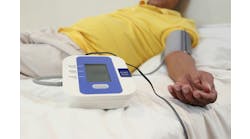One-third (34 percent) of total U.S. health care payments were tied to alternative payment models (APMs), such as shared savings/risk arrangements, bundled payments, or population-based reimbursements, in 2017, up from 23 percent in 2015, according to a report from the Health Care Payment Learning and Action Network (LAN).
LAN’s latest progress report measures the use of APMs among public and private health plan and the analysis is based on data sourced from LAN, America’s Health Insurance Plan (AHIP), the Blue Cross Blue Shield Association (BCBSA) and the Centers for Medicare and Medicaid Services (CMS). The data was collected across commercial, Medicaid, Medicare Advantage and fee-for-service (FFS) Medicare market segments.
LAN is a public-private partnership launched in March 2015 by the U.S. Department of Health and Human Services (HHS) to drive adoption and alignment of APMs. At its inception, LAN set out a goal of transitioning 30 percent of total U.S. health care payments to APMs by 2016 and 50 percent by 2018.
According to LAN, the progress report, the largest and most comprehensive effort of its kind, confirms positive and sustained momentum shifting health care payments away from fee-for-service toward value-based payments aimed at improving quality, reducing costs, and providing better health outcomes for patients. Yet, there are additional opportunities to increase payments in episode- and population-based payments that have additional downside risk, according to the report.
Specifically, LAN’s progress report measures the shift away from the current fee-for-service models of payment in the health care system to models that pay providers and hospitals for quality care and improved health. Like last year’s effort, the APM Measurement Effort includes FFS Medicare data, in addition to data from 61 health plans and 3 FFS Medicaid States, representing a total of 77 percent of covered lives in the United States.
The report data was categorized according to the four categories of the original LAN APM Framework—category 1 is traditional FFS or other legacy payments not linked to quality; category 2 is foundational payments like care coordination fees or pay-for-performance; category 3 is APMs built on FFS architecture and include shared savings, shared risk and bundled payments; category 4 is population-based payment and integrated finance and delivery systems.
According to LAN’s analysis, 41 percent of healthcare dollars fall into Category 1 (FFS with no link to quality and value); 25 percent of health care dollars fall into Category 2 (FFS with a link to quality and value) and 34 percent of health care dollars fall into a composite of Categories 3 and 4 (e.g., shared savings, shared risk, bundled payments, or population-based payments). That 34 percent represents approximately 226.3 million Americans and 77 percent of the covered population.
When comparing APM adoption across different market segments, it is clear which markets are driving the overall adoption of value-based payments, according to the report. Medicare Advantage had 49.5 percent of health care dollars in Categories 3 and 4 and FFS Medicare had 38.3 percent of health care dollars in Categories 3 and 4. The commercial line of business had 28.3 percent of health care dollars in Categories 3 and 4, while Medicaid had 25 percent of health care dollars in Categories 3 and 4.
This year marks the first time the LAN’s measurement effort reported findings at the payment or subcategory level. Notably, the findings show most of the spending tied to Category 3 and 4 APMs falls within the Framework’s 3A category, which focuses on shared savings. Only 12.5 percent of payments were made in Categories 3B, 4A, 4B and 4C combined, which represents APMs with shared savings and downside risk as well as population-based payments with additional risk.
LAN notes that these findings indicate there are additional opportunities to increase payments through episode- and population-based payments that have additional risk.
This year also marks the first time the LAN reported payment data by line of business (i.e., commercial, Medicaid, Medicare Advantage, and FFS Medicare), rather than across lines of business only. Like last year’s effort, the APM measurement effort includes FFS Medicare data, in addition to data from 61 health plans and 3 FFS Medicaid States, representing a total of 77 percent of covered lives in the United States.
“The report’s findings reinforce our understanding that there is sustained, positive momentum in the effort to shift healthcare payments from traditional fee-for-service into value-based payments,” Mark McClellan, co-chair, LAN Guiding Committee, and director of the Robert J. Margolis Center for Health Policy, said in a statement. “While we celebrate the increase in overall APM adoption, we also know further progress on payment reform will be important to ensure health care dollars flow through models that have more risk.”
“Our healthcare spending is growing faster than our overall economy and by 2026, 1 in 5 dollars spent in the United States will be spent on healthcare,” CMS Administrator Seema Verma said in a statement in the LAN press release. “This is simply unsustainable, and we must change this trajectory. CMS values our partnerships with those on the frontlines of our healthcare system, and we continue to work with innovators to develop new ways to pay for and deliver care that focuses on patients.”
LAN’s report also included the payers’ perspectives on the future of APM adoption. Ninety percent of payers indicated that APM activity will increase, 9 percent said it will stay the same, while zero payers surveyed indicated that APM activity will decrease.
In responding to a follow-up question regarding which APM subcategory will be most impacted, nearly half (48 percent) of payers identified subcategory 3B: Fee-for-service-based shared-risk, Procedure based bundled/episode payments, and Population-based payments that are not condition specific.
“[3B’s] selection as the APM to be most impacted by future APM adoption reflects a likely shift to two-sided risk arrangements,” the report stated. Apart from the 48 percent that selected 3B as the APM most impacted, another 25% of payers identified subcategory 3A (traditional shared-savings, utilization-based shared-savings) as the APM most impacted by future activity.
Payers responded that APM activity will result in better quality of care, more affordable care, and improved care coordination. While they felt that payment reform may drive further consolidation among healthcare providers, they did not expect higher unit prices as a consequence.


